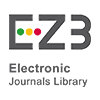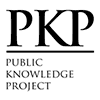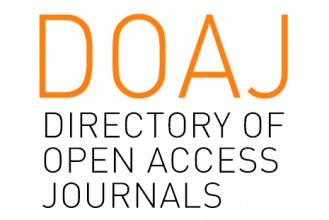Feminism Movement as a Catalyst for Democratization in Iran 2022-2024
Abstract
In this research analyzes how the women's movement in Iran between 2022 and 2024 served as a catalyst in the process towards democracy in the country. The beginning of the movement's revival began after the death of Mahsa Amini, which sparked massive protests led by women with the cry "Women, Life, Freedom." The movement not only calls for freedom of dress, but also fights for broader human rights, including the right to expression, political involvement, and legal justice. With a qualitative approach and using the theoretical frameworks of Islamic feminism and participatory democracy, the research assesses the various forms of resistance perpetrated by women, from street demonstrations to online campaigns and legal advocacy, as well as the repressive response of the Iranian government that includes detention, torture, and execution. This research also explores how religious understanding contributes to the sustainability of patriarchal domination and how Islamic feminists such as Amina Wadud counter this with a more equitable and inclusive hermeneutic approach. In the context of state imposed repression, support from the international community, including Western countries and human rights institutions, strengthens the success of this movement as part of the global effort towards democracy and gender equality. The selection of the 2022–2024 period is based on the momentum of the women's movement resurgence following the death of Mahsa Amini, which marked a significant transformation in the trajectory of feminist struggles as a catalyst for democratization in Iran. The analysis shows that the feminism movement in Iran has been instrumental in driving significant socio political change and has created more opportunities for women to be involved in the public sphere. With the active involvement of women in fighting for their rights and freedoms, this movement shows that democracy cannot be realized without the presence of women as key actors in the process of change.
Keywords
Full Text:
PDFReferences
Afshar, H. (2023). Women and politics in Iran: Veiling, unveiling and reveiling. Routledge.
Azadeh, F. (2023). Revolutionary Feminism in Iran: Between Protest and Politics. Middle East Report, 312(1), 20–29.
Badran, M. (2009). Feminism in Islam: Secular and Religious Convergences. Oxford: Oneworld Publications.
Barber, B. R. (1984). Strong Democracy: Participatory Politics for a New Age. University of California Press.
Bayat, A. (2013). Life as Politics: How Ordinary People Change the Middle East (2nd ed.) Stanford University Press.
Bayat, A. (2022). Revolution without revolutionaries: Making sense of the Arab Spring Stanford University Press.
Creswell, J. W. (2016). Research Design: Qualitative, Quantitative, and Mixed Methods Approaches (4th ed.). SAGE Publications.
Chehabi, H. E. (2023). Civic Resistance and Political Change in Iran. Comparative Studies of South Asia, Africa and the Middle East, 43(2), 211–225.
Dehghanpisheh, B. (2023). The Iranian Protest Network: Digital Mobilization and State Response. Journal of Digital Activism, 11(3), 45–60.
Esfandiari, G. (2022). The Woman, Life, Freedom Movement: A Turning Point in Iran Radio Free Europe / Radio Liberty.
Fung, A., & Wright, E. O. (2003). Deepening Democracy: Institutional Innovations in Empowered Participatory Governance. Verso.
Held, D. (2006). Models of Democracy (3rd ed.). Stanford University Press.
Kian-Thiébaut, A. (2022). Women and the making of civil society in post-revolutionary Iran. In Women and Islam: Critical Concepts in Sociology (Vol. IV). Routledge.
Milan, F. (2011). Words, Not Swords: Iranian Women Writers and the Freedom of Movement. Syracuse University Press.
Mir-Hosseini, Z. (2006). Muslim Women's Quest for Equality: Between Islamic Law and Feminism. Critical Inquiry, 32(4), 629–645. https://doi.org/10.1086/508085.
Moaveni, A. (2019). Guest House for Young Widows: Among the Women of ISIS. Random House.
Moghadam, V. M. (2002). Islamic Feminism and Its Discontents: Toward a Resolution of the Debate. Signs: Journal of Women in Culture and Society, 27(4), 1135–1171. https://doi.org/10.1086/339639.
Moghadam, V. M. (2003). Modernizing Women: Gender and Social Change in the Middle East. Lynne Rienner Publishers.
Pateman, C. (1970). Participation and democratic theory. Cambridge: Cambridge University Press.
Shirazi, F. (2021). Muslim women in war and crisis: Representation and reality. University of Texas Press.
Sreberny, A., & Khiabany, G. (2023). New Media and Democratic Resistance in the Middle East. International Journal of Communication, 17, 4211–4232.
Tohidi, N. (2023). Women and the Quest for Democracy in Iran. Journal of Middle East Women's Studies.
Wadud, A. (1999). Qur'an and woman: Rereading the sacred text from a woman's perspective. New York: Oxford University Press.
Wright, R. (2023). The Iranian Women's Uprising and the World's Response. The New Yorker. Retrieved from https://www.newyorker.com/news.
DOI: http://dx.doi.org/10.18415/ijmmu.v12i6.6854
Refbacks
- There are currently no refbacks.
Copyright (c) 2025 International Journal of Multicultural and Multireligious Understanding

This work is licensed under a Creative Commons Attribution-NonCommercial-NoDerivatives 4.0 International License.
https://ijmmu.com
editor@ijmmu.com
facebook.com/ijmmu
Copyright © 2014-2018 IJMMU. All rights reserved.




































